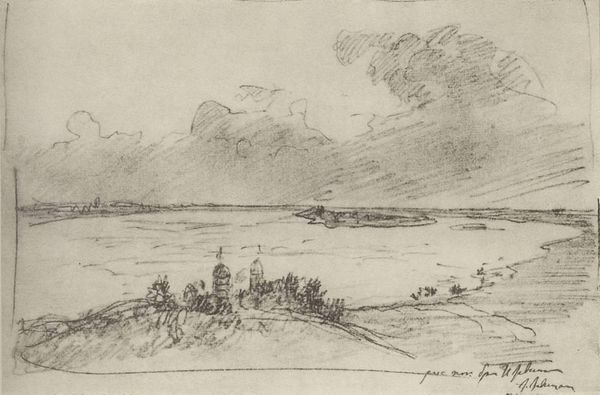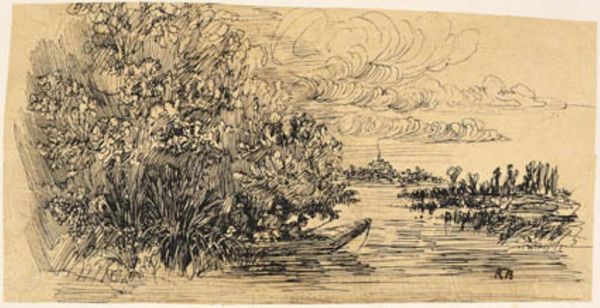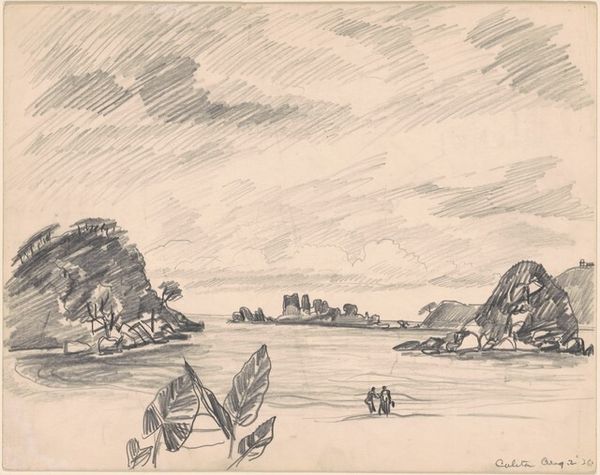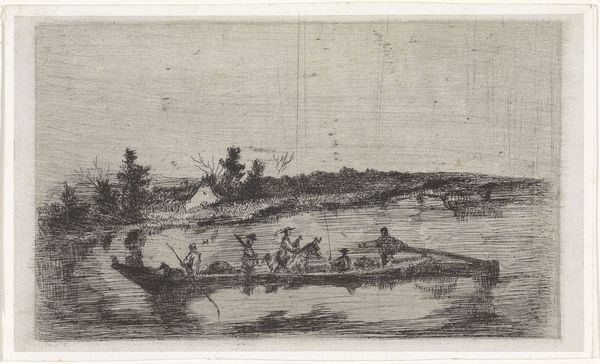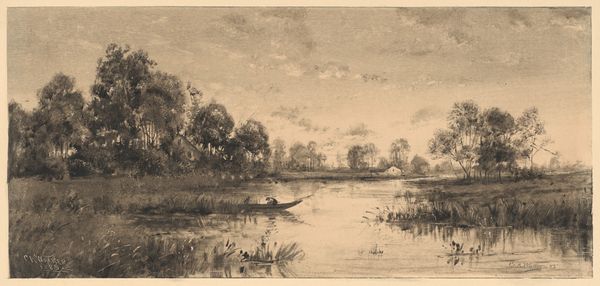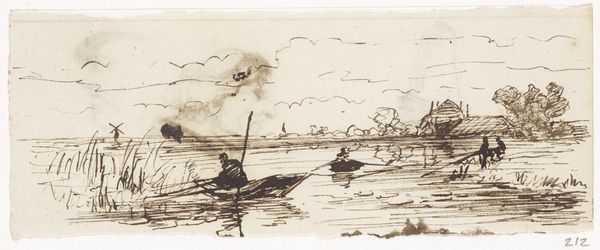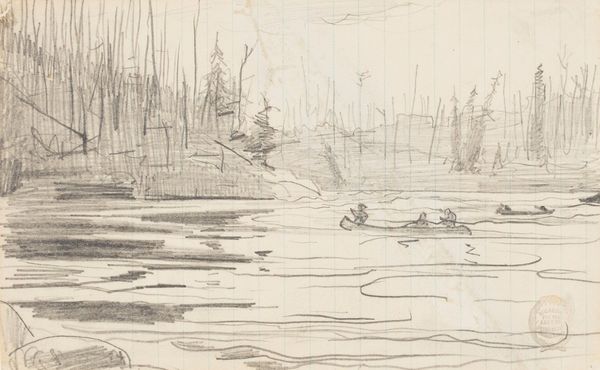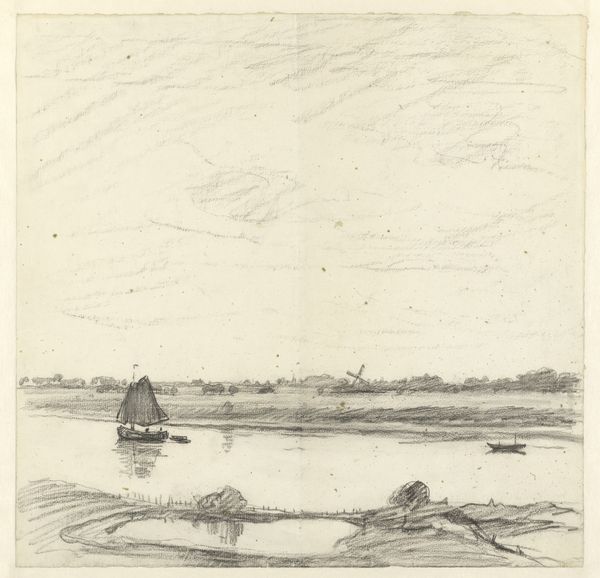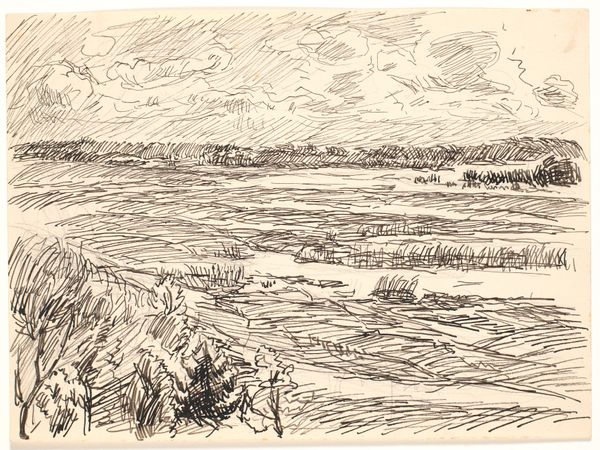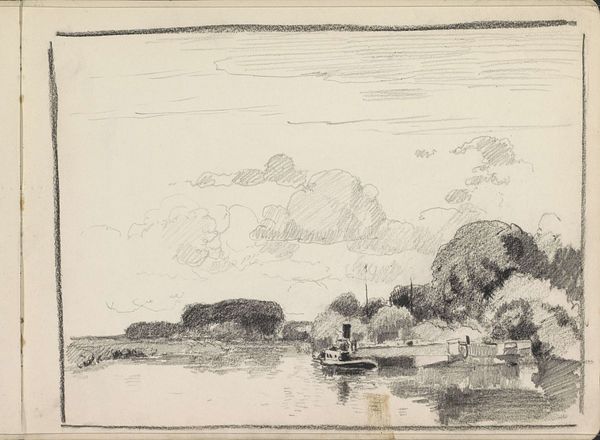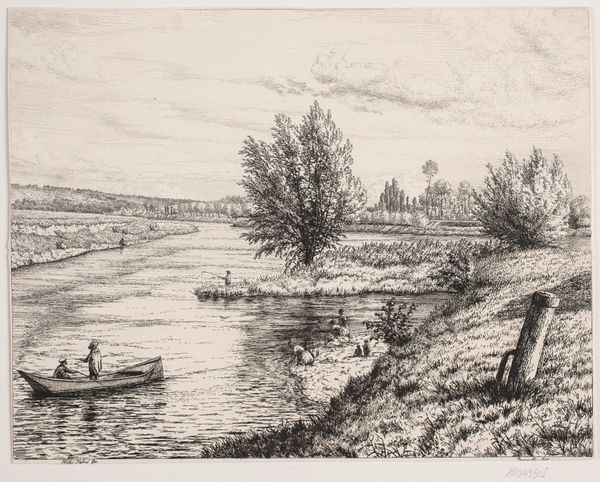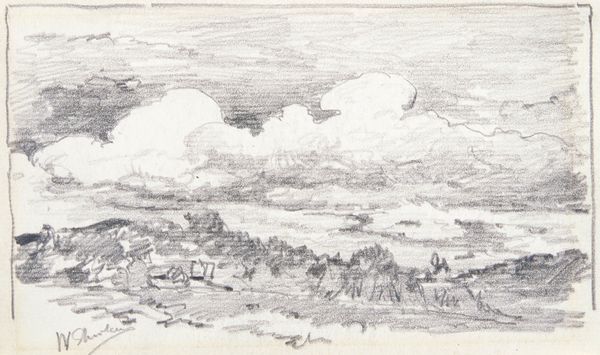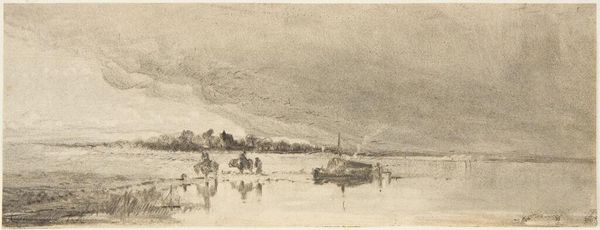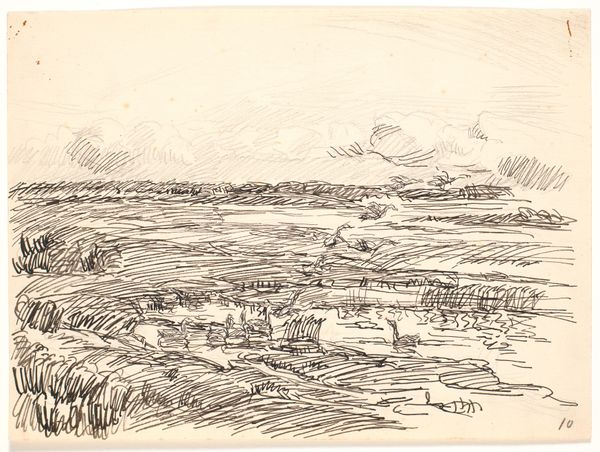
Copyright: National Gallery of Art: CC0 1.0
Otto Schubert’s ‘Elblandschoft’ is a print, most likely a lithograph, that captures a landscape view. The Elbe River flows through the composition, its surface reflecting the sky, flanked by grassy banks. Schubert uses layers of ink to create a sense of depth and atmosphere, with looser marks in the sky and more deliberate strokes in the foreground. The texture of the lithographic stone itself may be visible, adding to the handcrafted feel of the print. Lithography is a printmaking process using a flat stone or metal plate on which the image areas are worked using a greasy substance so that the ink will adhere to them, while the non-image areas are made ink-repellent. It is a process reliant on industrialization, not least in the production of printing presses and inks. Schubert’s choice of lithography suggests an interest in the democratization of art, making it more accessible to a wider audience. By focusing on the material and process of the artwork, we can better understand its cultural significance beyond the traditional boundaries of fine art.
Comments
No comments
Be the first to comment and join the conversation on the ultimate creative platform.
